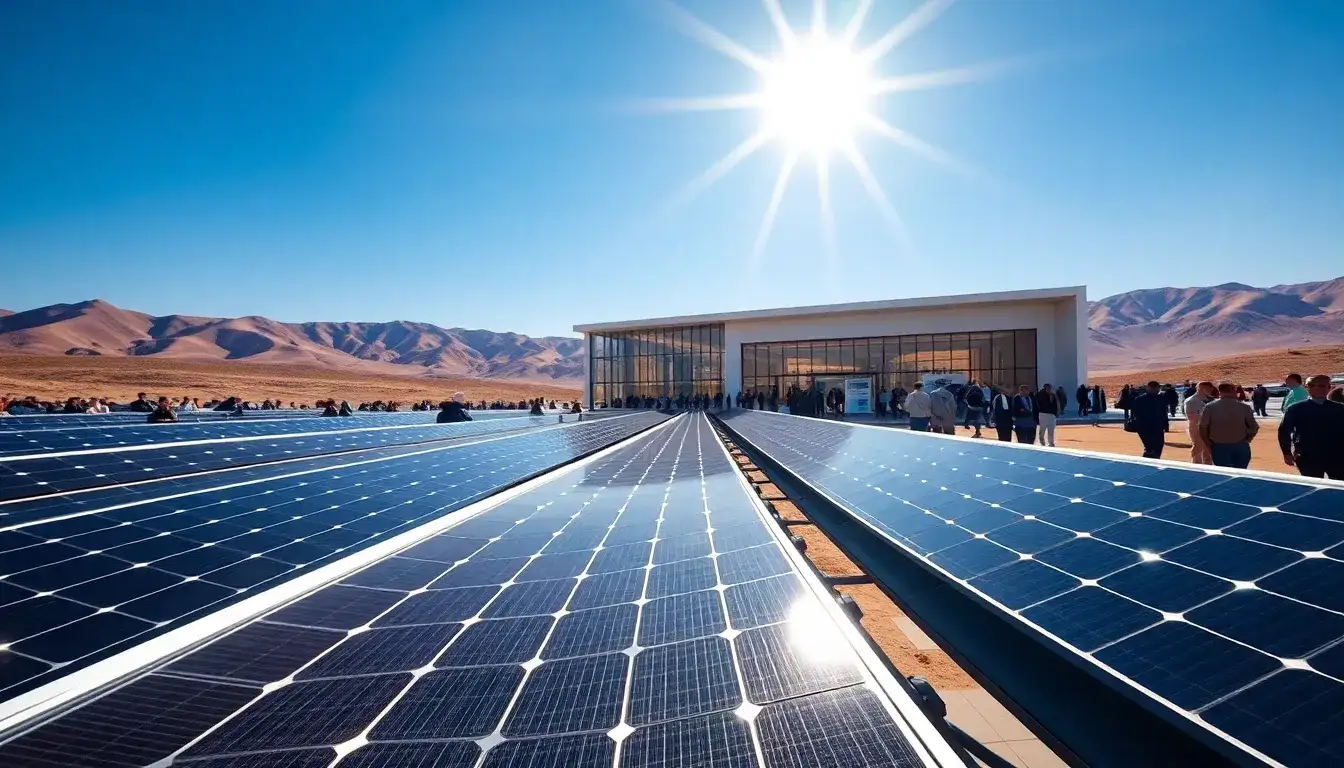
National Solar Exhibition | 2025 Xinjiang International Solar Photovoltaic Exhibition Set to Open in September
Date: September 11-13, 2025
Location: Xinjiang International Convention and Exhibition Center (Urumqi) – Exhibition area of over 50,000 square meters
Exhibitors: Over 900 exhibitors
Visitors: More than 50,000 professional attendees
Concurrent Forums: More than 20 sessions
Underpinned by national policies, China’s new energy industry is rapidly transitioning towards a green and low-carbon future, guided by the “dual carbon” strategy. Xinjiang, leveraging its abundant “desert and wasteland” resources, has become a core area for significant wind and solar power projects in the country.
Recently, the region has seen the rollout of major projects, including the first “desert and wasteland” large-scale renewable energy transmission project and the Northwest’s first million-kilowatt pumped storage power station, injecting strong momentum into Xinjiang’s new energy sector.
The photovoltaic industry in Xinjiang has experienced explosive growth in recent years, with solar panels and wind turbines forming an “energy blue ocean” in the desert and Gobi, consistently pushing the scale of local renewable energy development to new heights. The distributed photovoltaic and household photovoltaic markets have rapidly emerged as new engines of industry growth.
The 2025 exhibition is expected to attract over 900 exhibitors and more than 50,000 professional visitors, covering the entire industry chain, including photovoltaic modules, energy storage systems, and smart grids, showcasing cutting-edge technological achievements.
This year’s exhibition features a “full industry chain display + multi-field integration” approach, with over 20 forums addressing topics such as improving the stability of photovoltaic power generation, green hydrogen production, and the synergy between new energy and agriculture. Institutions like the China Energy Vehicle Communication Group are deeply involved, promoting integrated cooperation among industry, academia, and research.
Exhibition categories include:
- Photovoltaic Production Equipment: Complete production lines for silicon rods, blocks, ingots, cutting, cleaning, testing equipment, and other related devices.
- Battery Production Equipment: Complete production lines, etching, cleaning, diffusion, coating, and testing equipment.
- Photovoltaic Modules/Components Production Equipment: Complete production lines, testing devices, glass cleaning equipment, and lamination devices.
- Thin-film Solar Panel Production Equipment: Equipment for amorphous silicon cells, copper indium gallium selenide (CIGS) cells, cadmium telluride (CdTe) cells, and dye-sensitized solar cells (DSSC).
- Photovoltaic Applications: Including silicon materials, ingots, wafers, encapsulation glass, and films.
- Solar Energy and Green Buildings: Solar thermal utilization, photovoltaic systems, solar air conditioning, and energy-saving products.
- Smart Grid and Energy Storage Technologies: New energy grid integration, intelligent power distribution, and energy management systems.
Schedule:
- September 9, 2025: Setup of exhibition booths
- September 10, 2025: Final setup of booths
- September 11, 2025: Opening ceremony and VIP visits
- September 12, 2025: Exhibition open for professional visitors
- September 13, 2025: Exhibitors dismantle booths
Future Outlook: Balancing Innovation and Internationalization
With breakthroughs in energy storage and flexible transmission technology, Xinjiang’s capacity to absorb renewable energy is set to continue rising, contributing to the establishment of a new power system. The exhibition will further enhance international cooperation, attracting representatives from over ten countries and promoting market expansion along the “Belt and Road” initiative.
Looking ahead, Xinjiang aims to establish itself as a global innovation hub in the new energy industry through an integrated “wind-solar-storage-hydrogen” model, providing a demonstration for achieving the “dual carbon” targets.

 Weekly Subscription
Weekly Subscription





